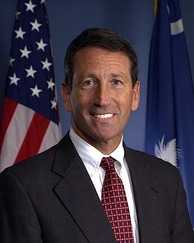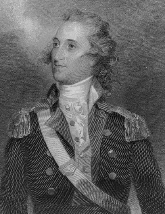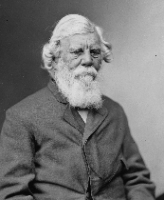Sanford Seeks 1st US House Seat by Ex-South Carolina Governor Since 1850s
The last time a former governor of the Palmetto State won a U.S. House contest was a decade before the Civil War (William Aiken)

Scott represented the state’s 1st CD in the 112th Congress and was reelected in November before being appointed by Governor Nikki Haley to the U.S. Senate seat vacated by Jim DeMint who abruptly resigned in December.
Sanford was elected three times to South Carolina’s 1st CD in 1994, 1996, and 1998 before winning the governorship in the 2002 election.
Much has been written about Sanford’s strange affair while governing in Columbia, the botched cover-up, and his refusal to resign from office despite pressure from both sides of the political spectrum.
As a result, despite strong name recognition, Sanford is far from a shoo-in at this point to win the GOP primary in mid-March.
But if he does, and wins the general election in May to return to D.C., Sanford will have accomplished a rare feat in South Carolina politics.
A Smart Politics review of South Carolina electoral history finds that only five ex-governors have been elected to the U.S. House in state history, and none since the 1850s.
Since colonial times, the Palmetto State has had more than 80 different men and women hold the office of governor.
A total of 18 individuals have served both as governor and as a U.S. Representative, although 13 of these did so climbing up the political pecking order – from the U.S. House to the governor’s mansion:
· Republican David Williams: U.S. Representative (1805-1809; 1811-1813) and governor (1814-1816).
· Democratic Republican John Taylor: U.S. Representative (1807-1810) and governor (1826-1828).
· Nullifier/Democrat Stephen Miller: U.S. Representative (1817-1819) and governor (1828-1830).
· Jacksonian James Hamilton: U.S. Representative (1822-1829) and governor (1830-1832).
· Democrat George McDuffie: U.S. Representative (1821-1834) and governor (1834-1836).
· Jacksonian/Democrat John Richardson: U.S. Representative (1836-1839) and governor (1840-1842).
· Nullifier/Democrat James Hammond: U.S. Representative (1835-1836) and governor (1842-1844).
· Nullifier/Democrat Francis Pickens: U.S. Representative (1834-1843) and governor (1860-1862).
· Democrat Milledge Bonham: U.S. Representative (1857-1860) and governor (1862-1864).
· Democrat James Orr: U.S. Representative (1849-1859) and governor (1865-1868).
· Democrat James Byrnes: U.S. Representative (1911-1925) and governor (1951-1955).
· Republican Carroll Campbell: U.S. Representative (1979-1987) and governor (1987-1995).
· Republican Mark Sanford: U.S. Representative (1995-2001) and governor (2003-2011).

Less than a decade after serving in the Continental Army, Pinckney was elected governor of South Carolina and served from 1787 to 1789.
After a stint in the South Carolina State House and serving more than four years as U.S. Minister to Great Britain, Pinckney was elected as a Federalist to the state’s 1st CD and served two terms from 1797 to 1801.
English-born Henry Middleton served in the South Carolina legislature for eight years before becoming governor from 1810 to 1812.
Middleton was elected as a Democratic Republican and served two terms from 1815 to 1819.
Charles Pinckney was next – governing the state for three separate stints from 1789 to 1792, 1796 to 1798, and 1806 to 1808.
Pinckney – a relation of two-time Federalist presidential nominee Charles Cotesworth Pinckney – was later elected to South Carolina’s 1st CD (following Middleton) and served one term from 1819 to 1821.
The next governor in question was Jacksonian Richard Manning, who served in the state house and senate before becoming governor from 1824 to 1826.
A few cycles after a failed congressional bid, Manning won a special election in the state’s 7th CD and was then reelected to a second term and served in Congress from 1834 to 1836.

Aiken served in the state house and senate for six years before becoming governor from 1844 to 1846.
He won one term from the state’s 6th CD (1851-1853) and then two terms from the 2nd CD (1853-1857) after redistricting in 1852.
Aiken was later elected to the 39th Congress but was denied credentials by the Republicans in 1867 and was never seated.
If his congressional campaign is successful, Mark Sanford would be the first South Carolinian to get elected to the U.S. House, then serve as governor, and then get elected back to the House once again.
Follow Smart Politics on Twitter.
